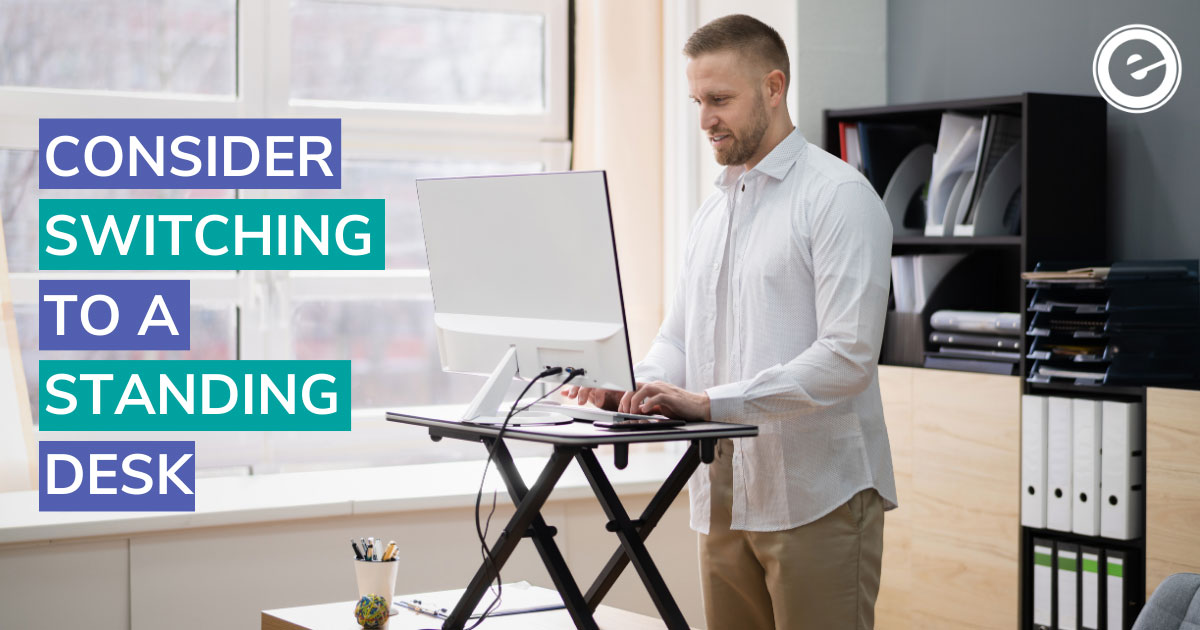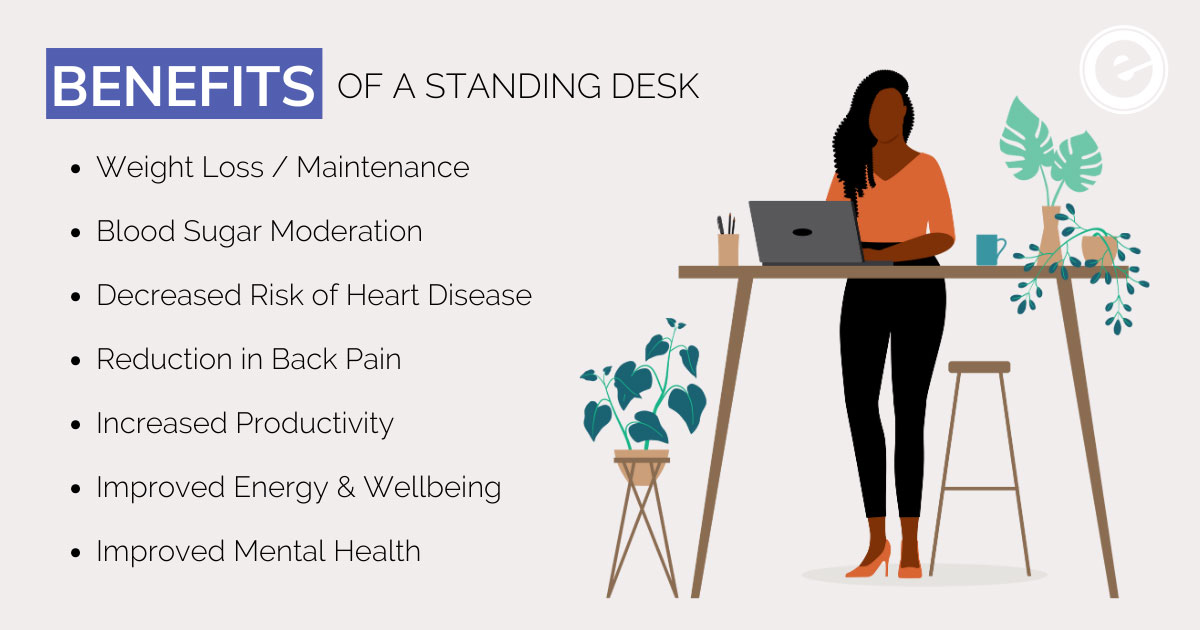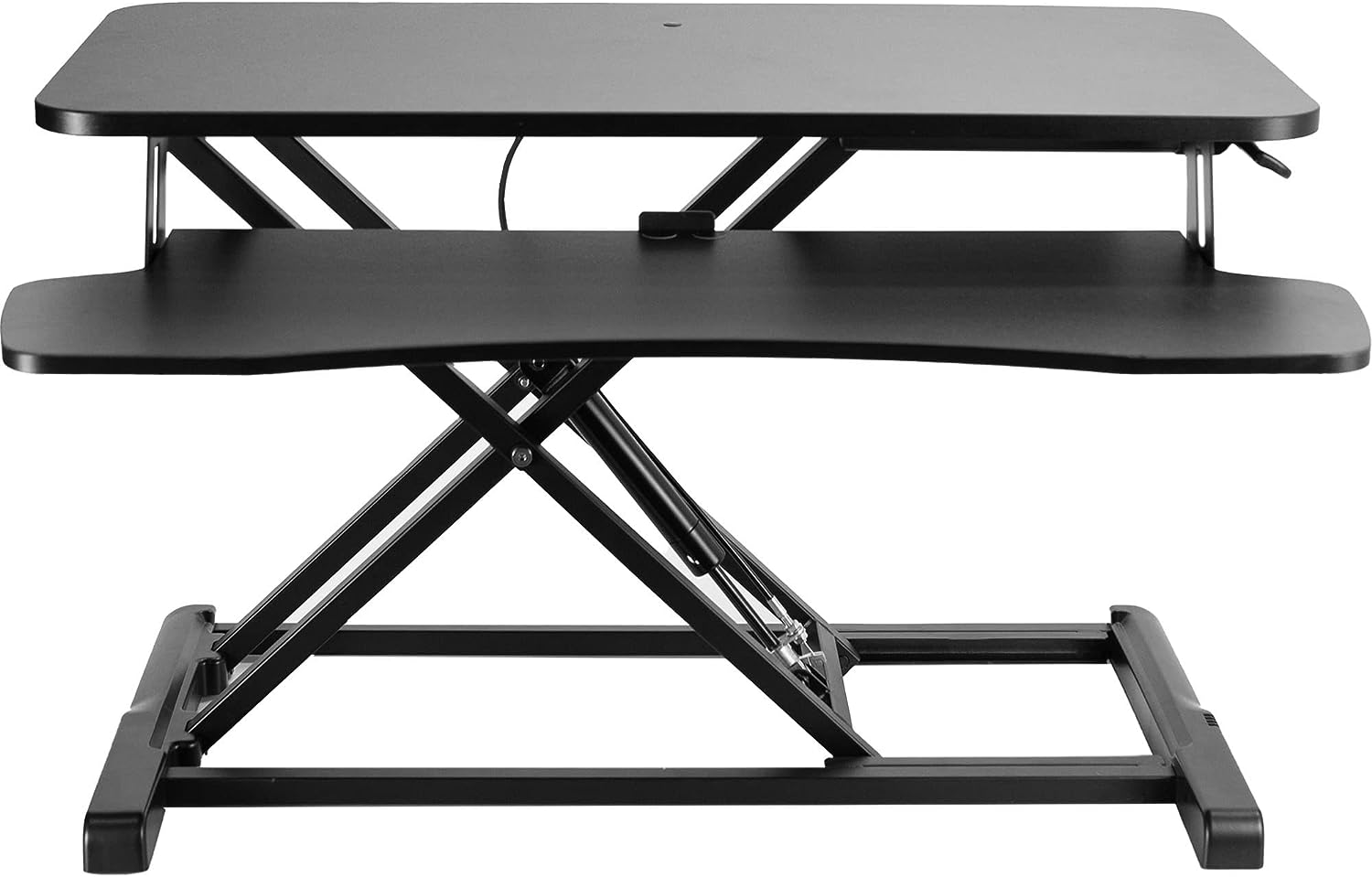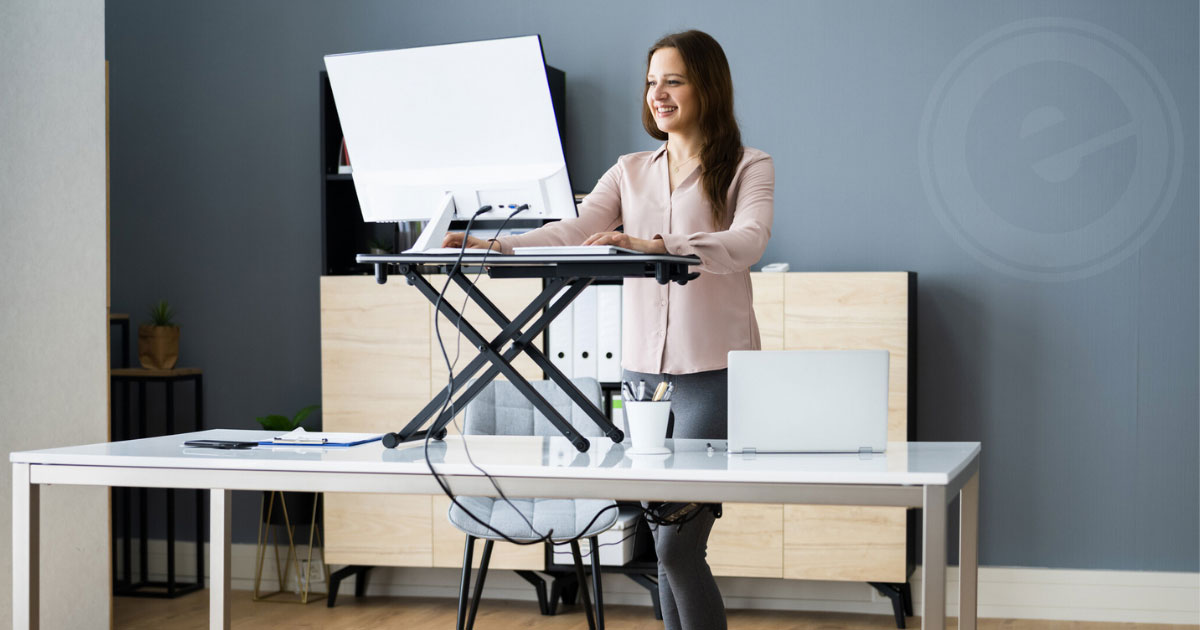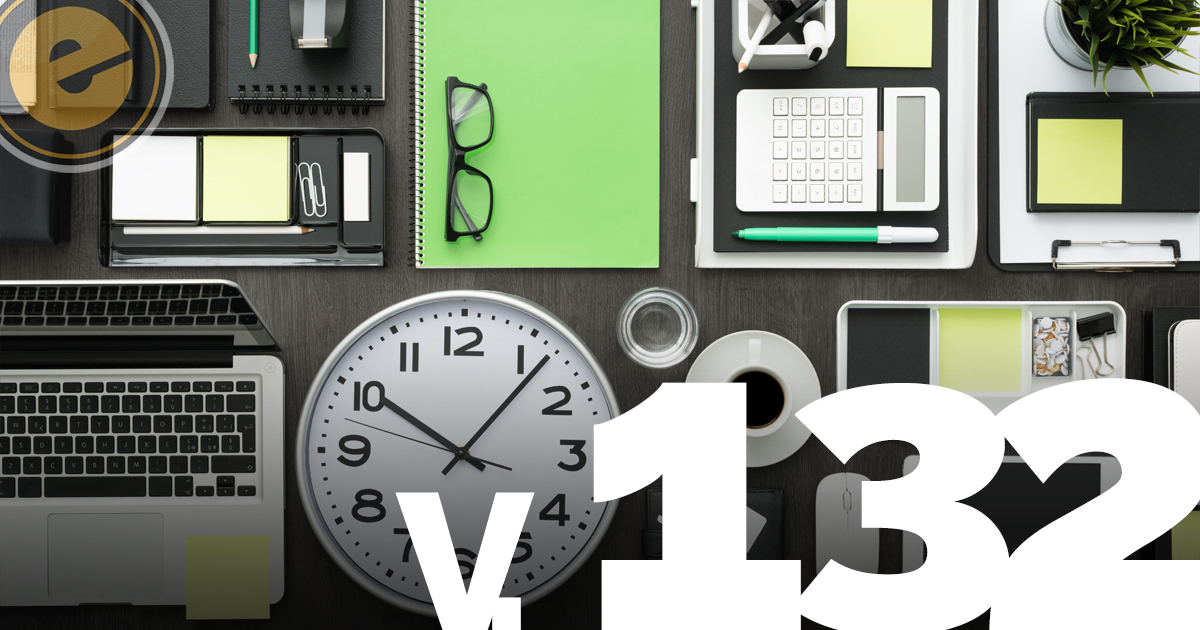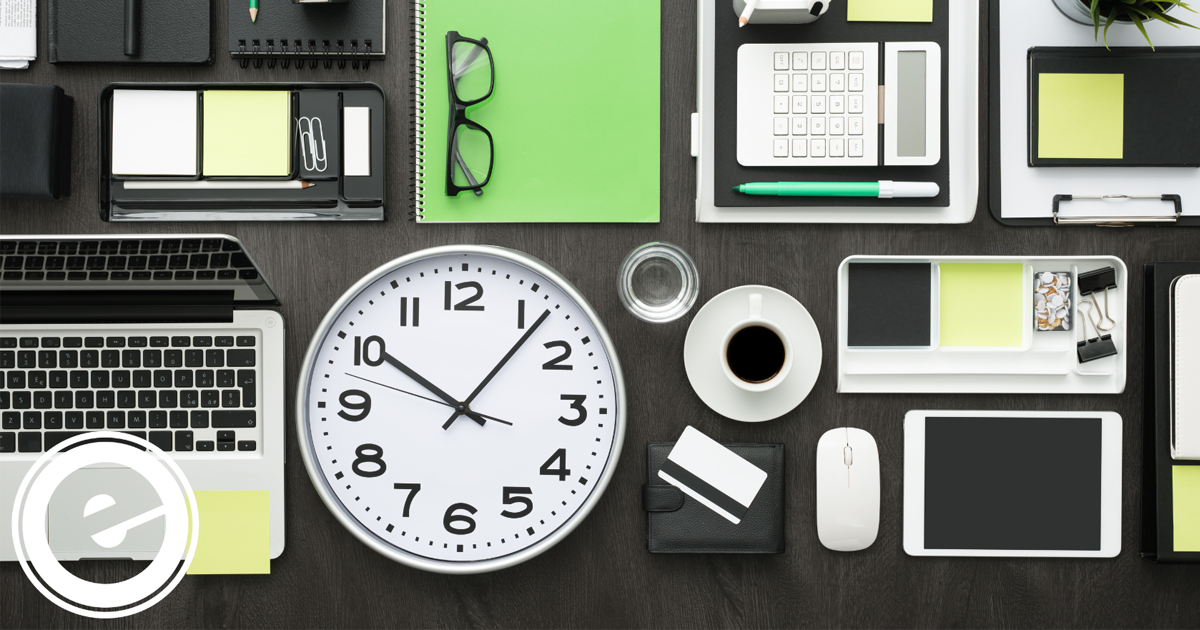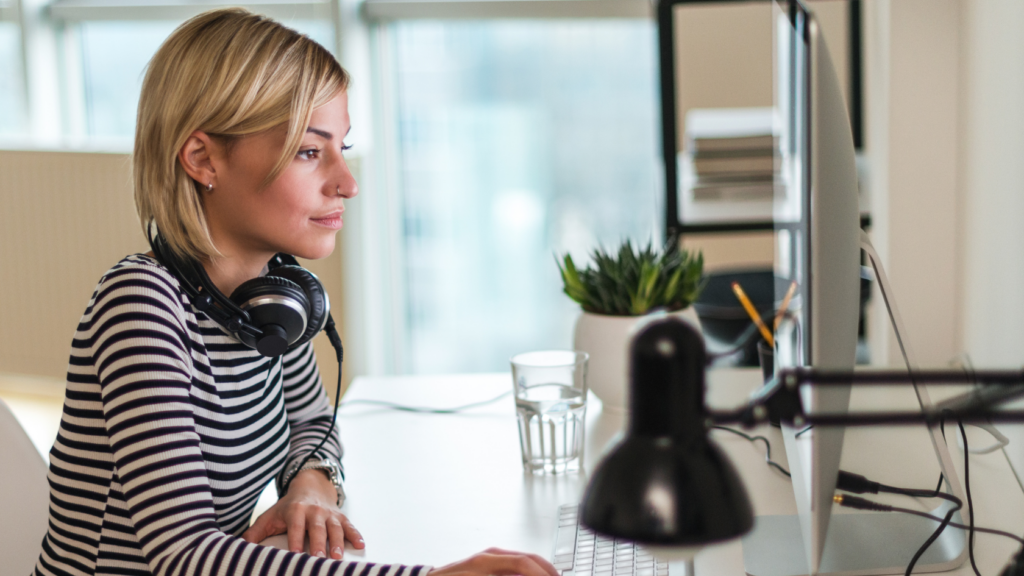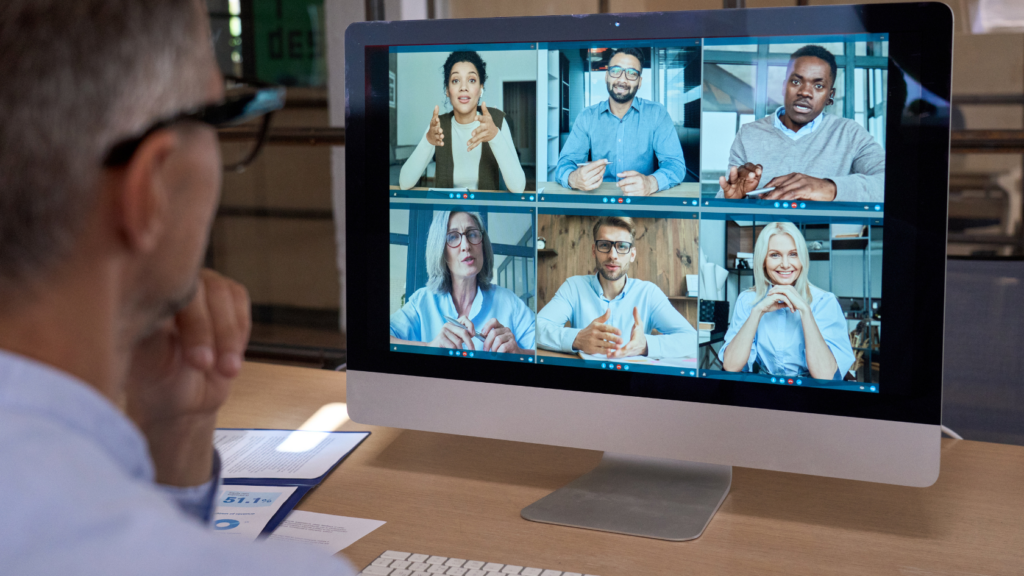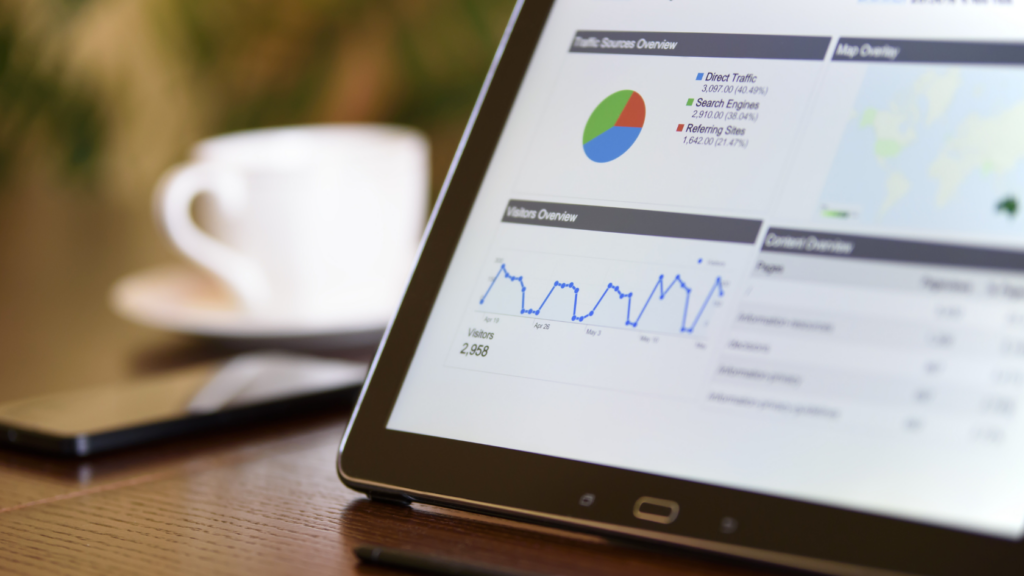Did you know? Adult Americans spend at least half of their awake time at work – a fact I can certainly attest to. Unfortunately, over 80% of those jobs, including mine, involve duties that keep people mostly sedentary. Worse, after work, the average US driver spends another hour in their car, and then a large part of their leisure time each day involved in sedentary activities such as watching television or scrolling social media on a smartphone. (Guilty as charged.)
The result is an ever-increasing dose of work-related (and leisure-related) physical inactivity for the better part of the US population.
Unfortunately, people who sit down for the better part of their lives and experience a largely sedentary lifestyle have an increased risk of health issues such as type 2 diabetes, heart disease, and even cancer. Other effects of long-term sitting include weight gain, musculoskeletal disorders, depression, and even cognitive impairment.
So, what can we do to offset the time we spend sitting at a desk? Career changes aren’t always an option, and many people otherwise enjoy the work they do. (I love my job!)
Fortunately, making a simple switch to a standing desk could help you counteract these effects. Let’s explore how you can benefit from a standing desk and whether you should consider joining me in making the change.
Why Would Someone Want a Standing Desk?
Many authors, politicians, and dignitaries have reportedly opted for a standing desk for various reasons. Some noteworthy standing desk aficionados include “Alice in Wonderland” author Lewis Carroll, American novelist Ernest Hemingway, Marvel comics author Stan Lee, and a handful of other notable composers, journalists, and philosophers. While some of these figures insisted that using a standing desk improved their creativity and work ethic, the most important reason modern standing desk users opt to use them on a regular basis is to reduce the health risks mentioned above – and scientists agree.
A previously mentioned study estimates that around 31% of the world’s population over the age of 15 do not participate in enough physical activity on a daily basis. In fact, the same study links physical inactivity to at least 6% of global mortality. That suggests that simply increasing physical activity can reduce some of the negative impacts of sedentary behaviors.
By that measure, the simplest antidote to excessive sedentary behavior is sitting less – standing whenever an opportunity presents itself. In fact, even leisurely movement can have a significant impact on the health and well-being of workers who normally sit at a desk for most of the workday. In addition to lowering the risk of the aforementioned diseases, as well as that of early mortality, those who opt for a standing desk stand to burn more calories, maintain muscle tone, increase agility, and experience overall muscle health. Improved physical health can increase energy levels, boost mental function, enhance cognitive abilities, and help bolster mental health.
Benefits of a Standing Desk
So, is a standing desk really better for you? Let’s look at the research and the potential benefits a standing desk can have for your overall wellness.
Weight Loss/Maintenance
A standing desk may help you bolster your weight loss and weight maintenance efforts while also reducing your risk of obesity. In fact, a research study revealed that standing for approximately half your workday is a relatively easy way to burn an additional 170 calories each day. By simply making the switch to a standing desk, nearly 1,000 additional calories can be burned each week just by standing instead of sitting for the better part of the day.
Blood Sugar Moderation
Making the switch to a standing desk could potentially help you moderate your blood sugar levels. The same study revealed that standing for 180 minutes following lunch can reduce blood sugar spikes by as much as 40% or more when compared to sitting for the same amount of time.
Decreased Risk of Heart Disease
Prolonged sitting has been shown to increase the risk of heart disease by up to 147%. Choosing to stand at a desk rather than sit can reduce your prolonged seat time by a great deal. As a result, you could mitigate your chances of heart disease by avoiding one of its key risk factors.
Reduction in Back Pain
One study sought to determine whether standing desks would alleviate back pain for workers with sedentary jobs. Following several weeks at a standing desk, the results showed a 32% improvement in reported back pain for overweight workers who had previously experienced pain. Another study from the CDC revealed similar results for sufferers of upper back pain and neck pain, who experienced a 54% improvement after using a hybrid sit-and-stand desk for four weeks.
Interestingly enough, when the subjects went back to their sitting-only desks, the improvements began to reverse in as little as two weeks. Researchers attribute the improvements to the fact that more standing supports the body’s naturally healthy posture. This reduces the potential for neck and back pain to develop.
Increased Productivity
As mentioned earlier, notable people use standing desks for multiple reasons, and while not all are medical in nature, there’s an interesting intersection between physical health and mental improvements. One set of researchers theorized that productivity is directly related to a worker’s musculoskeletal comfort and designed a study aimed at examining whether switching between sitting and standing posture throughout the workday not only reduces musculoskeletal pain but improves productivity as a result. They were able to show a direct correlation between productivity and time spent in a hybrid workspace in which subjects alternated between sitting and standing throughout their workday. They concluded that by reducing discomfort and pain, standing desks increased productivity levels compared to sitting-only desks.
Improved Energy and Wellbeing
Many individuals who make the switch to a standing desk experience an overall renewed sense of well-being. This is revealed by the aforementioned seven-week study aimed at measuring productivity increases for people who used a hybrid workspace. The researchers noted that 87% of the subjects in hybrid sit-and-stand workspaces reported that they felt more energy and vigor during the workday, and when they returned to their seated workspaces, their mood levels dropped back to normal levels. This is likely because standing increases the flow of blood and oxygen to and from the brain, which can affect cognition, motivation, and mood.
Improved Mental Health
The impact of a sedentary lifestyle on mental health issues like depression and anxiety cannot be understated. That means there’s real potential for a standing desk to improve your mental health. Take, for example, the sluggish afternoon lull that many workers experience: it can often be attributed to being seated for so long throughout the day and can lead to worse performance at work and a decrease in socialization. But, when people have more energy, things like interaction, confidence, and a positive sense of well-being can rebound. Plus, when more fulfilled workers engage with one another more often, they increase collaboration, communication, and creativity, not to mention a sense of teamwork that can benefit individuals and companies alike.
How You Can Incorporate a Standing Desk Into Your Workspace
If you’re still asking, “Should I switch to a standing desk?” the answer is an easy one: anyone who is considering a vertical move can benefit from making the switch.
Now, the only problem you need to solve is the logistics.
Whether you work from home and have limited space, aren’t convinced your employer will let you rearrange a shared workspace, or simply don’t want to redecorate, a full-sized standing desk can pose a roadblock for many who’d like to incorporate more standing during the day. Fortunately, there’s a far easier option: a standing desk adapter.
This product is capable of turning any standard seated desk into a standing desk in a matter of minutes – and, best of all, you won’t need to move heavy furniture in or out of the office.
If you’re not interested in poring over the reviews and features of hundreds of products available online, I suggest the VIVO Desk Converter.
VIVO Desk Converter
Anyone looking for an affordable way to easily switch over to a standing workplace should take a look at the VIVO Desk Converter. You’ll find a total of six size options ranging from 26″ to 48″ available in a variety of colors to match most furniture finishes.
This adapter is made of high-grade alloy steel and wood and comes with a three-year manufacturer’s warranty, as well as helpful tech support available if you need it for setup or initial product use. The VIVO Desk Converter comes ready to use other than attaching the keyboard tray.
All told, I can see why the VIVO brand is such a trusted name in American-designed office products. With over 30 patents, VIVO has been delivering innovative and health-focused products to US office spaces for 20 years.
VIVO Standing Desk Converter Reviews
But, you don’t just have to take my word for it! Check out these reviews from verified purchasers on Amazon:
So, How Do You Use a Standing Desk?
Aside from the drastically simplified logistics of using a desk converter rather than a dedicated standing desk, products like the VIVO Desk Converter allow people like me who are new to standing or hybrid workstations an opportunity to ease into use. The quick-change lift system makes going from standing to sitting to standing incredibly easy, which is a boon if you’re just getting started.
I agree with productivity gurus who suggest that gradually easing into the new posture can make the transition easier, especially if you’re less agile or concerned that you won’t be able to stand for long periods of time early on. You can consider using a standing workspace for short intervals of time at the beginning – around five minutes each hour is a good starting point. Then, increase your standing time gradually, working your way up to 10 minutes per hour, then 15 minutes per hour. Once you reach 20 minutes per hour, begin alternating standing and sitting for 20, 30, or 40-minute intervals.
Another way to incorporate standing into your workday is to adopt the 20-8-2 pattern. This involves sitting for 20 minutes, standing for eight minutes, and actively moving around for two minutes. Repeating this routine all day throughout the workday is the methodology used in a few of the studies mentioned earlier, and has demonstrated the key health benefits listed above.
Standing: Rising in Popularity
The concept of a standing desk may appear novel, contemporary, and even strange. But if you’re like me (or Carrol, Hemingway, and Stan Lee) you’ll find that anything that boosts productivity, promotes health, and helps you generally feel better all around is worth exploring. Take it from a few of the largest tech employers in the world: Facebook employees have been using standing desks for more than a decade, and Apple has supplied 100% of employees at its Apple Park Headquarters with standing desks to promote a healthier lifestyle.
If you sit all day, don’t stop at a convertible desk; consider some other tools and gadgets to improve your work life. Personally, I love the ComfiLife Gel Enhanced Seat Cushion (Amazon) during my seat time and the Verilux HappyLight Lucent Light (Amazon) all day long. When you spend more than half your waking hours at work, improving your working environment is key to extending your working years, boosting your cognition, and enhancing your productivity. Most importantly of all, you’ll be happier while you’re there and prolong your life in the process.
Think about it!
Yours In Health,
Jenny
References :
- Duffy, E. Y., Hiremath, P. G., Martinez-Amezcua, P., Safeer, R., Schrack, J. A., Blaha, M. J., Michos, E. D., Blumenthal, R. S., Martin, S. S., & Cainzos-Achirica, M. (2021). Opportunities to improve cardiovascular health in the new American workplace. American Journal of Preventive Cardiology, 5, 100136. https://doi.org/10.1016/j.ajpc.2020.100136
- https://aaafoundation.org/wp-content/uploads/2022/11/AAAFTS_Research-Brief_2022-American-Driving-Survey2020-2021.pdf
- Park, J. H., Moon, J. H., Kim, H. J., Kong, M. H., & Oh, Y. H. (2020). Sedentary lifestyle: Overview of Updated Evidence of Potential Health Risks. Korean Journal of Family Medicine, 41(6), 365–373. https://doi.org/10.4082/kjfm.20.0165
- Buckley, J. P., Mellor, D. D., Morris, M., & Joseph, F. (2014). Standing-based office work shows encouraging signs of attenuating post-prandial glycaemic excursion. Occupational and Environmental Medicine, 71(2), 109–111. https://doi.org/10.1136/oemed-2013-101823
- Wilmot, E. G., Edwardson, C. L., Achana, F. A., Davies, M. J., Gorely, T., Gray, L. J., Khunti, K., Yates, T., & Biddle, S. J. H. (2012). Sedentary time in adults and the association with diabetes, cardiovascular disease and death: systematic review and meta-analysis. Diabetologia, 55(11), 2895–2905. https://doi.org/10.1007/s00125-012-2677-z
- Thorp, A. A., Kingwell, B. A., Owen, N., & Dunstan, D. W. (2014). Breaking up workplace sitting time with intermittent standing bouts improves fatigue and musculoskeletal discomfort in overweight/obese office workers. Occupational and Environmental Medicine, 71(11), 765–771. https://doi.org/10.1136/oemed-2014-102348
- Pronk, N. P., Katz, A. S., Lowry, M., & Payfer, J. R. (2012). Reducing Occupational Sitting Time and Improving Worker Health: The Take-a-Stand Project, 2011. Preventing Chronic Disease, 9. https://doi.org/10.5888/pcd9.110323
- Hamer, M., & Stamatakis, E. (2014). Prospective Study of Sedentary Behavior, Risk of Depression, and Cognitive Impairment. Medicine & Science in Sports & Exercise, 46(4), 718–723. https://doi.org/10.1249/mss.0000000000000156
- Teychenne, M., Costigan, S. A., & Parker, K. (2015). The association between sedentary behaviour and risk of anxiety: a systematic review. BMC Public Health, 15(1). https://doi.org/10.1186/s12889-015-1843-x
- gifford, julia. (2013, September 26). We Tested Standing Desks—Here’s Proof They Make You More Productive. ReadWrite. https://readwrite.com/standing-desks-productivity/
- Facebook Uses Adjustable Height Standing Desks. Here’s Why … (n.d.). Human Solution. Retrieved February 1, 2024, from https://www.thehumansolution.com/blog/facebook-uses-adjustable-height-standing-desks-heres-why/
- Ahaskar, K. D. (2018, June 19). Why Tim Cook wants Apple employees to stand at work. Mint. https://www.livemint.com/news/business-of-life/why-tim-cook-wants-apple-employees-to-stand-at-work-1543418614185.html
